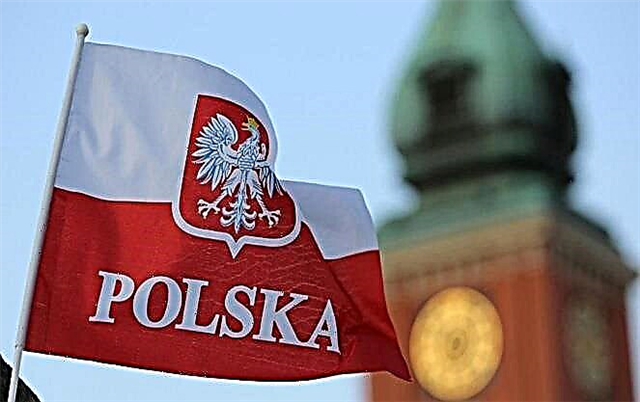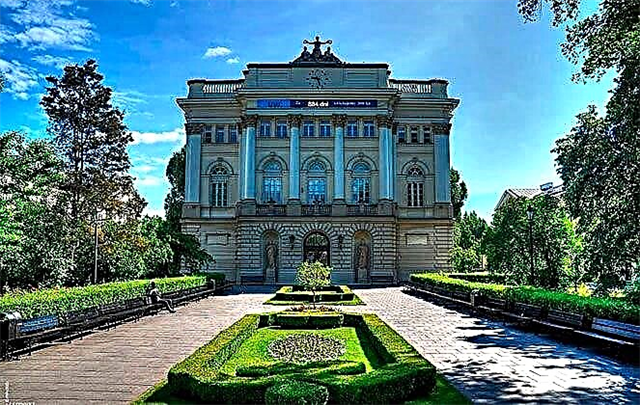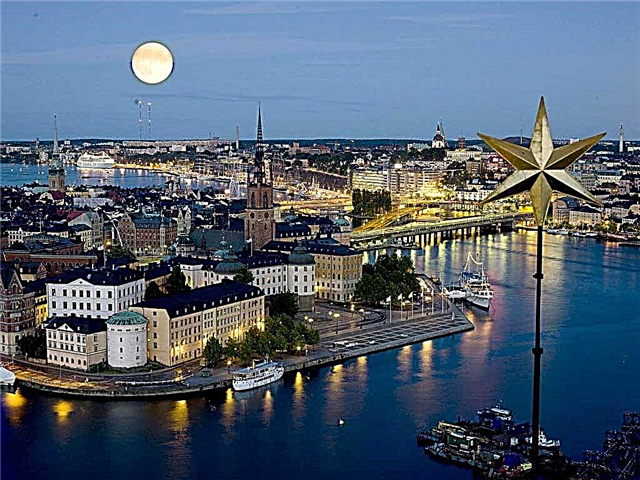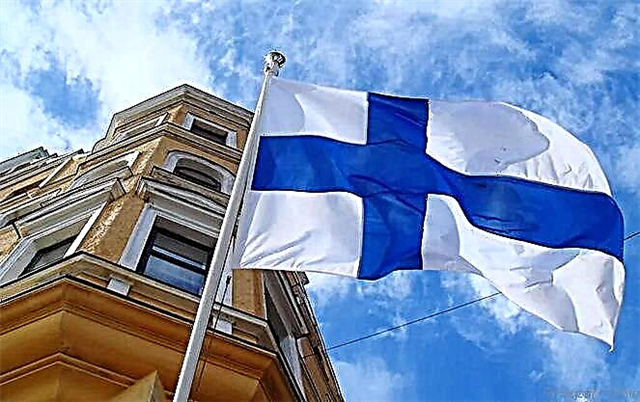Finnish universities offer quality education, a diploma in demand on the world market and the opportunity to study for free in a country with a fairly high standard of living. Each educational institution has its own teaching methodology, while students independently draw up an individual curriculum for themselves, choosing disciplines for study from those offered by the university.

How the higher education system works in Finland
Graduates of local lyceums or vocational schools can enroll in a Finnish university. And although some of them prefer to start working immediately after graduating from secondary educational institutions, many still choose the student path.
The period when the first university in Finland was founded dates back to the 17th century (1640). It was at this time that the Abo Royal Academy was created, located in Turku (then Finland was still part of Sweden). In the 19th century (1828) the university changed its location to Helsinki.
For a long time, he university remained the only higher education institution in the country. Only at the beginning of the twentieth century, two more Finnish universities were opened: the Technological and the School of Economics and Management.

Studying at a Finnish university involves several stages, and its duration depends on the category of the university:
- General universities. They offer a classic type of education based on scientific activity. In total, there are 14 state universities in the country, including specialized ones (School of Business and Economics). Universities in this category are empowered to independently develop curricula and distribute finances. Stages of training:
- bachelor's degree - takes 3 years;
- Master's degree - 2 years;
- doctoral studies - 4 years.
- Universities of Applied Sciences. Here you can get technical vocational education. The flexibility of the educational process and established contacts with business make it possible to adjust the learning process based on the needs of the labor market and changes in the economy.
There are 26 universities of this type in the country. Stages of education:
- bachelor's degree - lasts 3.5-4.5 years;
- Master's degree - 1-1.5 years.
Already the first stage is considered a completed higher education. However, most of the students do not stop there and continue their studies further in the magistracy, and some in the doctoral program. The defense of a doctoral dissertation gives the right to teach in higher educational institutions.
In the QS World University Rankings, compiled in 2021, there are 10 universities in Finland.
The University of Helsinki is located above all - 102nd place.
Leading general universities in Finland
In multidisciplinary universities, you can get a diploma in the following areas: physics, mathematics, linguistics, chemistry, geography, history, sociology, geology, medicine, psychology, law, pedagogy, architecture.
In itself, training in such educational institutions is academic. This means that students devote a lot of time to various research, work in the library. They will have a huge amount of information, impressive lists of textbooks and manuals, a lot of individual work.
After the third year, the defense of the diploma project is expected. After that, some continue to study for a master's degree, while others start looking for work.
The leading multidisciplinary universities in the country are:
| Name | Faculties | Characteristic |
|---|---|---|
| Helsinki University www.helsinki.fi | arts and humanities theology pedagogical school information technology and natural sciences political science, sociology, economics agriculture and forestry biology and ecology veterinary pharmaceuticals | The first institution of higher education in the country, formerly the Imperial Alexander University. About 40 thousand students study here, of which almost 2 thousand are foreigners. 7 out of 11 Finnish presidents graduated from this particular university. Education is conducted in Finnish, Swedish and English. |
| Abo University in Turku www.abo.fi | information Technology biotechnology human rights organic chemistry information and structural biology engineering natural Sciences | Most of the programs are read in Swedish. Only 3 are available in English (engineering chemistry, international law, business via mobile and electronic communications). |
| Vaas University www.univaasa.fi | humanitarian sciences business technological administration | It is famous for its great competition for admission - 10 people for 1 place. The number of students does not exceed 6,000, of which 400 are foreigners. 5 programs are taught in English. |
| University of Lapland www.ulapland.fi | education right natural Sciences design and fine arts | Founded in 1979. Located in the city of Rovaniemi. It is considered the northernmost educational institution in Europe. Number of students - 4000. Cooperates with 260 universities around the world. The Institute for Arctic Research enjoys significant authority. |
| University of Eastern Finland www.uef.fi | forestry philosophy health care social sciences and economics | Located in the city of Joensuu. Has been working since 2010. It takes 6th place in the national ranking. The leading faculty is medicine. The number of students is 12 thousand. |
| University of Oulu www.oulu.fi | medicine education humanitarian sciences business and economics technological natural Sciences | Founded in 1958. Located in the northwestern part of Finland. 15 thousand students study here (about 500 of them are foreign citizens). |
| Tampere University www.uta.fi | information Technology medicine humanitarian sciences education Social sciencies | Has been working since 1925. About 18 thousand students study in it, 800 of them are foreigners. Includes 9 institutes. Offers 5 programs in English. |
| Jyväskylä University www.jyu.fi | cultural studies biology and physical education music corporate management family business education nanosciences finance and economics sports and physiology renewable energy sources business and information technology | Its history dates back to 1863. In the national ranking, it is included in the list of the 10 best universities in the country. About 10 thousand students study here. |
| Academy of Arts in Helsinki www.uniarts.fi | music art painting design landscape design | Works since 2013 Teaches no more than 300 students per year. Considered a reputable institution in Europe |
This type of institution also includes the Swedish Institute of Management and Economics, located in the Finnish capital. Founded in 1909, it teaches about 3000 students.
Technical universities of the country
Polytechnic universities are very popular among foreign students. Training in them is carried out in groups of several people. In these institutions, the focus is on the practice and application of the knowledge gained.
The curriculum includes student exchange programs as well as internships and a large amount of subjects to study. All this increases the stay in student status by 6-12 months.
The number of technical universities in the country significantly exceeds the number of multidisciplinary ones.
The table shows the leading educational institutions of this orientation:
| Name | Faculties | Peculiarities |
|---|---|---|
| Metropolis University Helsinki | business cultural studies medicine engineering | The number of students is 16.5 thousand.Number of programs: 68 in Finnish and 11 more in English. About 900 students from abroad study at the university. |
| Lappeenranta University of Technology www.lut.fi | business administration technologies (chemistry, electricity, energy saving systems and many others) | Founded in 1969. Teaches no more than 6 thousand students per year. The language of instruction is Finnish. Participates in many student exchange programs. |
| University in Lahti www.lamk.fi | business and management design health and social protection technologies | Year of foundation - 1992. The university practices a combined form of education, which allows students to earn extra money while studying. |
| Aviation Academy www.finaa.fi | pilot training | Founded in 2002. Funded by the government and the national carrier Finnair |
| Saimaa University of Applied Sciences in Lappeenranta www.saimia.fi | technologies business management tourism art health care and social protection | Offers programs in English (6 out of 22 possible). Here you can take language courses. The number of students is about 4000. |
When choosing an educational institution, you should pay attention to which faculties are leading in it. For example, getting a medical education is best at the University of Eastern Finland. But training in the field of tourism is most in demand at the University of Saimaa.
Education in Finnish universities in Russian and English
According to statistics from the Center for International Mobility (CIMO), 14.7 percent of the total number of students in Finland are Russians. And since not every applicant speaks Finnish or Swedish, many of them are interested in programs that allow them to master a specialty in English or Russian.
The choice of programs in English is quite extensive.
Multidisciplinary universities often practice the following scheme: a student studies in English for two years and during this time studies Finnish, after which he completes the educational process in the state language of the country.
According to CIMO, there are more than 400 English-language programs in universities in Finland. However, you need to be prepared for the fact that the list of academic disciplines provided for by these programs may be narrower than the list of those that are read in Finnish or Swedish.

In particular, we are talking about the University of Helsinki, which is the leading university in Finland and does not experience a shortage of students.
The areas of study can be as follows:
- University of Helsinki and University of Jyväskylä: business, economics.
- Waza University: International Business, Finance, Intercultural Communication, Mobile Phone Programming, Nanotechnology.
- Swedish School of Economics: finance, financial information processing, information systems, interactive marketing, corporate governance, real estate market.
Most of the Arts programs are taught in Finnish, but many of the teachers speak English. This course is fully English only at the University of Turku.
But to master tourism in English is possible exclusively in polytechnic universities.
Higher educational institutions of Finland do not provide programs in Russian.
Admission to universities in Finland
Each university sets its own deadlines for submitting documents and passing entrance exams. This information is always displayed on the websites of educational institutions.

You can send an application to several universities at once. Please note that the timing of applications for applications from applicants for undergraduate and graduate programs may not be the same.
The requirements for admission deserve special attention.
It is not enough for graduates of Russian schools to complete 11 grades: to enter the first year of a Finnish university, they will have to study at a Russian higher educational institution for 1 year.
In addition to a certificate and an extract with grades, the applicant needs to prepare a motivation letter and pass an exam for proficiency in English or Finnish.
The step-by-step process is as follows:
- Choice of university and program.
- Studying the timing and characteristics of admission.
- Sending documents and waiting for a response.
- Obtaining an invitation to pass exams.
- Registration of a visa for a short-term trip during the period of passing the tests.
- Waiting for a response from the selection committee.
Immediately after receiving the notification of enrollment, you can proceed to requesting a student visa and applying for a place in the hostel.
Very often, when there is a shortage of applicants, representatives of Finnish universities come to Russian universities to select candidates. As a rule, such an opportunity is provided to schoolchildren of St. Petersburg and Karelia.
Features of training on master's and doctoral programs
The official website of the university allows you to find out what specialties are available for those who wish to continue their studies after receiving a bachelor's degree. Obtaining a master's degree is possible in the following areas:
- economy;
- business;
- engineering;
- communications;
- ecology;
- finance.
Master's students can choose to study both basic and additional subjects. General education disciplines can also be included in the program.

The duration of training depends on the chosen specialty. In this case, a full, partial or correspondence form of study is possible. The process ends with the writing of a scientific work.
There are no restrictions on citizenship, nationality and age in admission to doctoral studies at a Finnish university. This requires:
- have a master's degree;
- know the language in which the chosen program is taught;
- understand that serious scientific work lies ahead.
There is no such thing as postgraduate study in Finland, so a master's degree is immediately followed by a doctorate.
The duration of doctoral studies is 4 years. The process begins with the choice of the topic of the dissertation, drawing up its plan, searching for a scientific advisor. After that, the candidate defends a monograph written in the course of training, gains a certain number of credits (points) and receives a doctoral degree.
How much does it cost to study at a Finnish university?
Foreigners can take the opportunity to get education free of charge, like local residents, but only if it comes to programs that are taught in Swedish or Finnish. All English-language courses, starting from 2021, are paid - on average, 1,500 euros per year, however, each university is empowered to independently determine the amount of contributions.
The table shows the comparative data of tuition fees in Europe:
| State | Tuition fees in euros for 1 semester (the average figure is shown) |
|---|---|
| Austria | 720 |
| France | 300-450 |
| Germany | 200 |
| Italy | 450-500 |
| Switzerland | 550 |
| Spain | 340-700 |
| Finland | 750 |
| United Kingdom | From 2000 |
Other expenses that may arise during the training process:
- payment for teaching aids;
- student union contributions;
- housing;
- nutrition.
The first two positions will require approximately € 90 each month. You will have to set aside somewhere between 150-200 euros for food. A dorm room will cost about 150-300 euros, depending on the number of neighbors and living conditions.
Is it possible to get a scholarship or grant
Foreign citizens cannot expect to receive scholarship payments. Only persons with Finnish citizenship or permanent residence have this right.

Students receive incentives in the form of scholarships not from the university itself, but from the National Insurance Institute. The university itself has nothing to do with this and can only dispose of some grants.
There may be several options for solving the financial issue:
- find scholarship grants in your country.There are numerous student exchange programs in Russia, as well as government programs. These include the presidential grant, which is awarded to the most talented candidates with excellent academic performance. Another project - "Global Education" - provides for about 700 scholarships that fully cover the cost of education and housing;
- find government programs in Finland. It will be more difficult to accomplish this task, since, firstly, there are very few of them, and secondly, they mostly concern only doctoral students. These include scholarships from the Center for International Mobility or the Finnish government. The amount of payments is 1,500 euros per month.
How students live in Finland
There are two options for living while studying with student youth:
- in dorm;
- in a rented apartment.
Almost all universities have their own campuses where their students live. At the same time, there are very few free ones - in most cases, the student will have to pay for the room or place in it. The cost depends on the educational institution, but in any case, a hostel will cost less than renting an apartment.
To get a place, you need to contact the curator who deals with this issue immediately after receiving confirmation of enrollment. Sometimes you have to wait for a free space, because you can simply not be in time for the distribution of housing. In this case, all that remains is to rent an apartment.

Usually, students are united in groups of 2-3 people in order to save on the housing issue. The rental price depends on the city. For example, in Helsinki it can reach 300-500 euros per month. However, the advantage of this type of residence is that after receiving a diploma, residents may not leave the apartment if they plan to continue to stay in Finland.
It should be noted that there are a lot of developers in the country who are building condominiums directly for students. Accommodation in them is cheaper, and living conditions can be considered quite comfortable.
Finland cannot be classified as a cheap country. Local residents are not very happy with their income, which allows them to meet only their basic needs. Transport services are especially expensive here: one trip by tram or metro costs 2-2.5 euros, and a liter of gasoline costs about 1.5 euros.
Income tax in Finland varies from 7 to 39% and depends on their value. Foreigners also pay taxes, but only on the profit that was received in Finland.
But this is not all that you will need money for every month:
- a grocery basket at the local supermarket chain Prisma - 38.8 euros per week;
- lunch at an inexpensive cafe - 12 euros;
- mobile communications and the Internet - 25-30 euros per month;
- visiting museums, exhibitions and galleries - 8-14 euros per ticket;
- cinema ticket - 15 euros;
- 1 year financial club subscription - 87 euros.
What else do applicants ask about?
At first, foreigners have to literally at every step face many questions regarding life in a new country. Let's try to help them by briefly answering some frequently asked questions:
- Is it possible to enter a Finnish university immediately after leaving school in Russia?
No, the Finnish education system is somewhat different from the Russian one. Therefore, before entering a university in Finland, you will have to study at a college in this country for a year or complete one university course in your home country.
- Where can I get my medical degree?
Finnish universities are famous all over the world for the training of high-class specialists in the field of medicine. They include oncologist Timo Joensuu, neurosurgeon Juha Hernesniemi, and orthopedist Sakari Orava. You can become a doctor by studying at one of 5 Finnish universities: Turku, Helsinki, Oulu, Tampere, Joensuu (University of Eastern Finland).
- Where can I take language courses?
All universities in the country provide an opportunity to learn Finnish. Various courses of educational institutions allow even foreigners to do this for free. At the University of Turku, for example, the study program is designed for 3 years. After graduation, the graduate can enter the magistracy in the specialty "Finnish and Related Languages".
Conclusions
Studying in Finland is a great opportunity to get a high-ranked higher education diploma, which is highly regarded in the world, on a free basis. But for this, first you have to learn Finnish, since all English-language programs from 2021 at local universities are paid.
Higher educational institutions of the country are divided into general and polytechnic. The most popular are the University of Helsinki, the University of Turku, Tampere, Eastern Finland and Jyväskylä.











